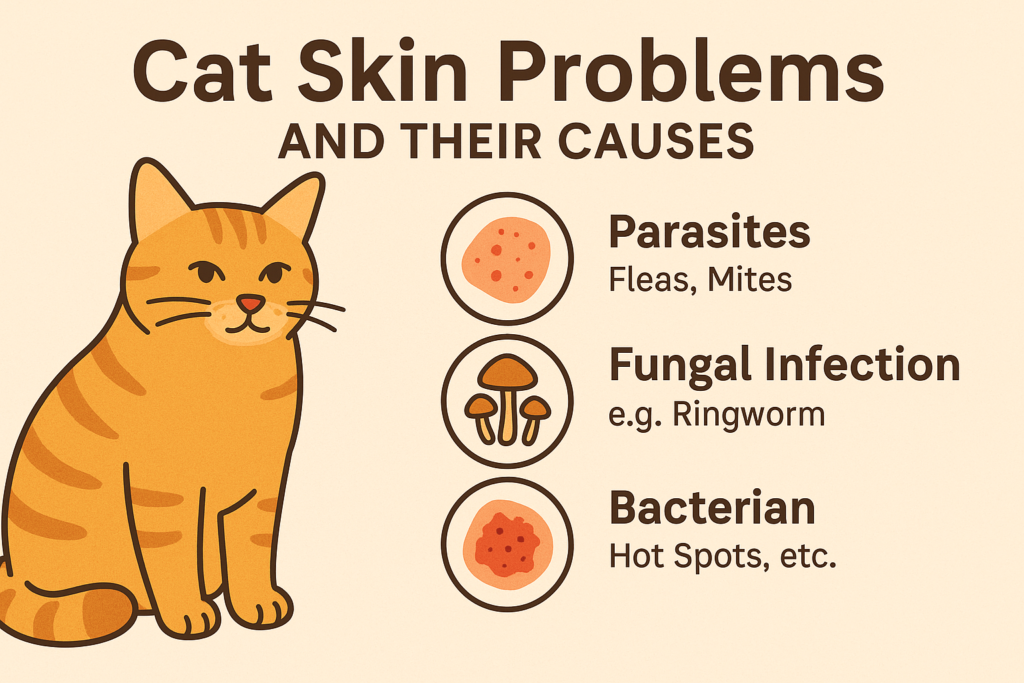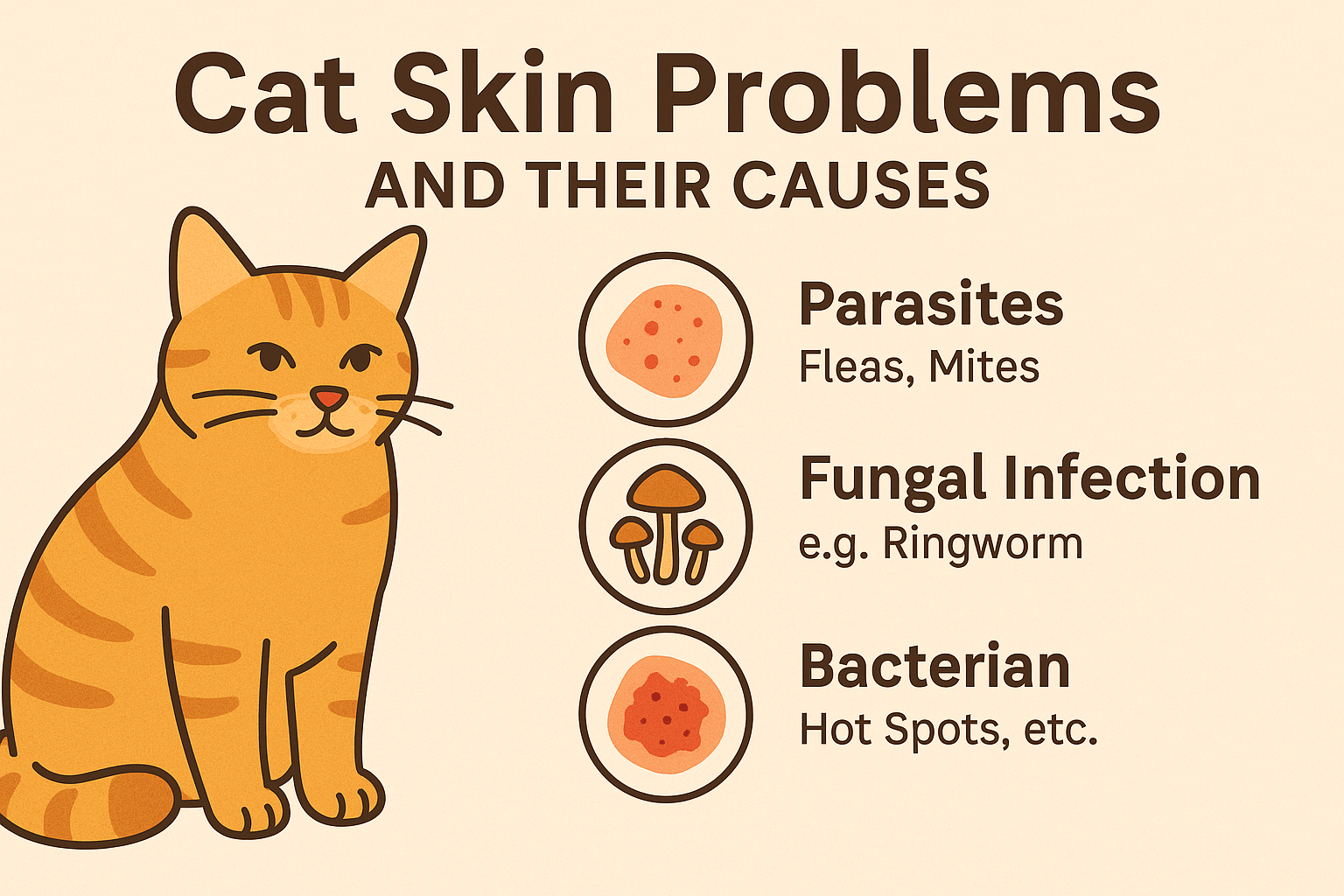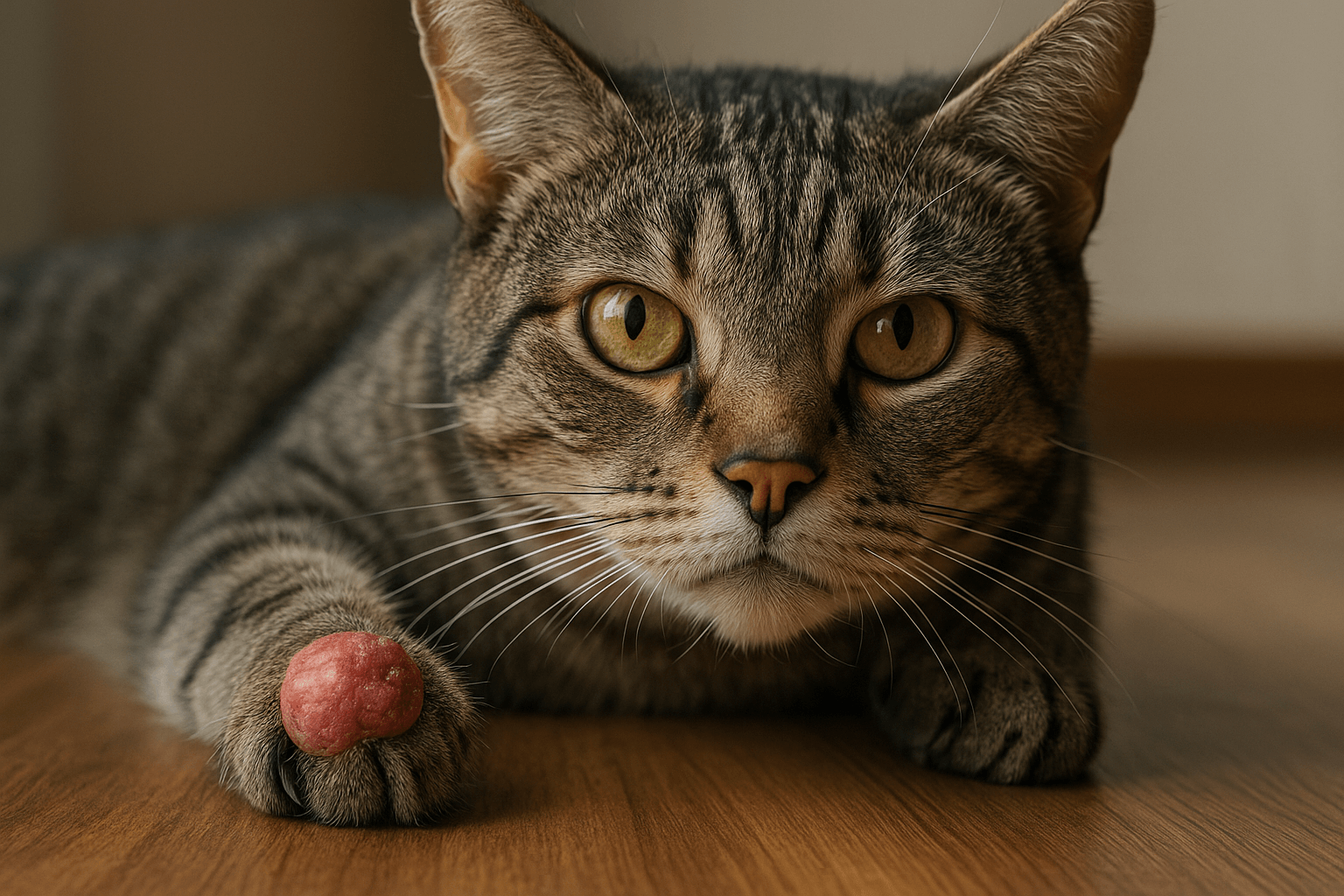What to Do About a Hole in Your Cats Skin
Discovering a hole in your cat’s skin can be alarming, but understanding the potential causes and knowing how to respond can make all the difference. While cats are naturally resilient creatures, their skin is vulnerable to injuries, infections, or underlying health issues that may lead to such wounds. Whether it’s caused by trauma, parasites, or a medical condition, addressing the issue promptly is crucial for your cat’s well-being. In this guide, we’ll explore everything you need to know about identifying, treating, and preventing holes in your cat’s skin, ensuring your furry friend stays healthy and comfortable.
Expert Insight: Understanding Wounds and Infections in Cats
“Cat owners typically notice a wound or swelling under the skin. This wound tends to be around the head or neck, as the cat has placed its head in the rodent burrow, making this part of the body more prone to infection. In addition to the wound or swelling, there is sometimes an ‘air hole’ used by the larvae to breathe, and matted fur caused by the cat over-grooming this area.”
Common Causes of Holes in a Cat’s Skin
A hole in your cat’s skin can result from a variety of factors, ranging from minor injuries to serious health concerns. Identifying the root cause is the first step toward effective treatment.
Fights with Other Animals:
Cats are territorial and may engage in fights, leaving puncture wounds or tears in their skin that can become infected.Parasites Like Fleas or Mites:
Persistent scratching due to flea infestations or mange can lead to open sores and holes in the skin.Allergic Reactions:
Skin allergies caused by food, environmental factors, or chemicals can result in excessive licking or scratching, damaging the skin.Infections or Abscesses:
Bacterial infections or abscesses from untreated wounds can cause holes as the body tries to expel pus or toxins.Underlying Medical Conditions:
Conditions like feline hyperesthesia syndrome or autoimmune disorders can weaken the skin, making it prone to lesions.
Understanding these causes helps you take appropriate action and seek veterinary care when necessary.

Signs That Indicate a Serious Problem
While some skin issues may heal on their own, others require immediate attention. Recognizing warning signs ensures your cat receives timely treatment.
Persistent Bleeding or Discharge:
If the hole continues to bleed or produces pus, it may indicate an infection that needs professional care.Swelling Around the Wound:
Swollen or inflamed skin suggests an underlying infection or abscess that requires antibiotics.Behavioral Changes:
Lethargy, loss of appetite, or increased aggression can signal pain or discomfort caused by the wound.Odor from the Affected Area:
A foul smell often indicates bacterial infection or necrotic tissue, which needs urgent treatment.Larger or Spreading Lesions:
If the hole grows in size or new lesions appear, it could point to a systemic issue requiring diagnosis.
Being vigilant about these symptoms ensures your cat gets the care they need to recover fully.
Check this guide 👉Understanding Cat Skin Conditions: Best 7 Health Tips!
Check this guide 👉Why Does My Cat Have Loose Skin? Best 7 Expert Tips!
Check this guide 👉How Can I Soothe My Cats Itchy Skin? Best 7 Health Tips!
Preventive Measures for Skin Health | Steps for Treating a Hole in the Skin |
|---|---|
Regular grooming to check for parasites | Clean the wound gently with saline solution |
Maintaining a balanced diet rich in omega-3s | Apply veterinarian-prescribed ointment |
Keeping cats indoors to avoid fights | Monitor for signs of infection daily |
Using flea prevention treatments | Keep the area covered with a protective bandage |
Scheduling routine vet check-ups | Seek professional care for deep or infected wounds |
How to Treat Minor Holes at Home
For small, non-infected wounds, home care can help promote healing. However, always consult your vet before proceeding, especially if you’re unsure about the severity.
Clean the Area Thoroughly:
Use sterile saline or diluted antiseptic to gently clean the wound and remove debris. Avoid harsh chemicals that could irritate the skin further.Apply a Pet-Safe Ointment:
Use an antibiotic ointment recommended by your vet to prevent infection and aid healing.Prevent Licking or Scratching:
Fit your cat with an Elizabethan collar (cone) to stop them from aggravating the wound.Keep the Wound Dry:
Ensure the affected area stays clean and dry, avoiding activities that might expose it to dirt or moisture.Monitor Progress Daily:
Check the wound regularly for signs of improvement or worsening, seeking veterinary advice if needed.
Proper home care can speed up recovery, but professional guidance is essential for more severe cases.
When to Visit the Veterinarian
Some cases require professional intervention to ensure your cat heals safely and completely. Knowing when to seek help can prevent complications.
Deep or Large Wounds:
Holes that penetrate deeply into the skin or muscle tissue need sutures or specialized treatment to heal properly.Signs of Infection:
Redness, swelling, warmth, or discharge around the wound indicates an infection that requires antibiotics.Foreign Objects Embedded in the Skin:
If debris or objects remain stuck in the wound, a vet should remove them to prevent further damage.Unexplained or Recurring Lesions:
Persistent or recurring holes may indicate an underlying condition like cancer or autoimmune disease, necessitating diagnostic tests.Severe Pain or Mobility Issues:
If your cat appears to be in significant pain or struggles to move, immediate veterinary care is critical.
Prompt action ensures your cat receives the best possible care and avoids long-term health problems.
Preventing Future Skin Issues
Preventing future skin problems involves proactive measures that keep your cat healthy and safe. These steps minimize the risk of injuries or infections that could lead to holes in the skin.
Regular Grooming Sessions:
Brush your cat’s fur frequently to detect early signs of parasites, irritation, or wounds.Maintain a Safe Environment:
Remove sharp objects or hazardous materials from your home to reduce the risk of accidental injuries.Use Flea and Tick Prevention:
Administer monthly flea and tick treatments to protect your cat from parasite-related skin damage.Provide a Balanced Diet:
Feed your cat high-quality food rich in vitamins and minerals to support strong, healthy skin.Schedule Routine Vet Visits:
Annual check-ups allow your vet to identify and address potential skin issues before they worsen.
Taking these precautions ensures your cat stays protected and minimizes the likelihood of future skin problems.
Understanding Feline Behavior Related to Skin Issues
Cats often exhibit specific behaviors when they experience skin discomfort, signaling that something may be wrong. Recognizing these behaviors helps you act quickly to address the issue.
Excessive Licking or Chewing:
Over-grooming certain areas may indicate irritation, pain, or an allergic reaction.Rubbing Against Furniture:
Cats rub their bodies against surfaces to relieve itching caused by parasites or allergies.Increased Aggression or Restlessness:
Pain or discomfort from a wound can make even the most docile cat irritable or restless.Hiding More Than Usual:
Cats instinctively hide when injured or unwell, so sudden changes in behavior warrant investigation.Loss of Fur in Specific Areas:
Bald patches often accompany skin issues like infections, allergies, or stress-related overgrooming.
Paying attention to these behaviors allows you to identify and resolve skin problems before they escalate.
The Role of Nutrition in Skin Health
A cat’s diet plays a vital role in maintaining healthy skin and preventing issues that could lead to holes or lesions. Ensuring your cat receives proper nutrition supports their overall well-being.
Omega-3 Fatty Acids:
Foods rich in omega-3s, like fish oil, promote healthy skin and reduce inflammation.Hydration Through Wet Food:
Feeding wet food increases water intake, keeping the skin hydrated and less prone to dryness or cracking.Avoiding Allergenic Ingredients:
Identify and eliminate ingredients your cat may be allergic to, such as certain proteins or grains.Supplements for Skin Support:
Consider supplements like biotin or zinc, which strengthen skin and improve its resilience.Balanced Meals for Immune Health:
A nutrient-rich diet boosts your cat’s immune system, helping them fight off infections that could harm their skin.
By prioritizing nutrition, you give your cat the tools they need to maintain strong, healthy skin and avoid preventable issues.
Frequently Asked Questions About Holes in a Cat’s Skin
Can I treat a hole in my cat’s skin without a vet?
For minor wounds, yes, but always consult a vet if you’re unsure or if the wound worsens.
How can I tell if the wound is infected?
Look for redness, swelling, discharge, or a foul odor—these are common signs of infection.
What should I do if my cat won’t stop licking the wound?
Use an Elizabethan collar (cone) to prevent further irritation and promote healing.
Are certain breeds more prone to skin issues?
Yes, breeds with thin coats or sensitive skin, like Sphynx cats, may be more susceptible to injuries.
How can I prevent my cat from getting hurt again?
Keep your cat indoors, groom them regularly, and address any behavioral or environmental risks.
Prioritizing Your Cat’s Skin Health
A hole in your cat’s skin may seem minor, but it can quickly escalate into a serious issue if left untreated. By staying informed about potential causes, recognizing warning signs, and taking preventive measures, you can protect your furry companion from unnecessary pain or complications. Remember, prompt veterinary care is always the safest option when dealing with persistent or severe wounds. With proper attention and care, you can ensure your cat enjoys a happy, healthy life free from preventable skin problems.
Cuterebra Larvae in Cats: Best 7 Expert Tips! – Expert advice on signs, treatment & prevention of this rare but serious feline parasitic infestation.
Cuterebra Larvae in Dogs: Best 7 Expert Tips! – Expert advice on signs, treatment & prevention of this rare but serious parasitic infestation.
Cat Tumor on Paw: Best 7 Expert Tips! – Expert advice on signs, diagnosis, treatment & care for feline paw tumors.
Panacur Side Effects in Dogs: Best 7 Expert Tips! – Safe usage, common reactions & when to call the vet.





